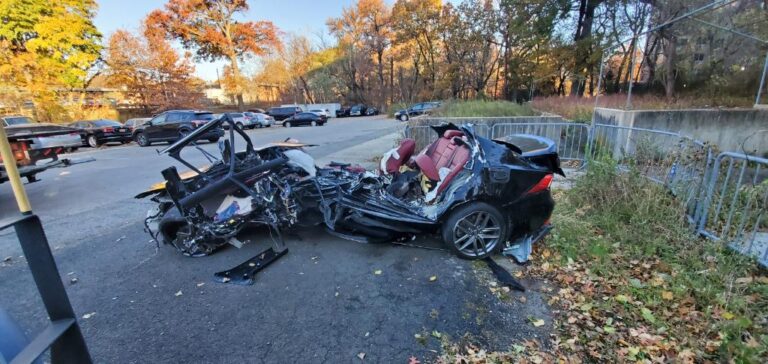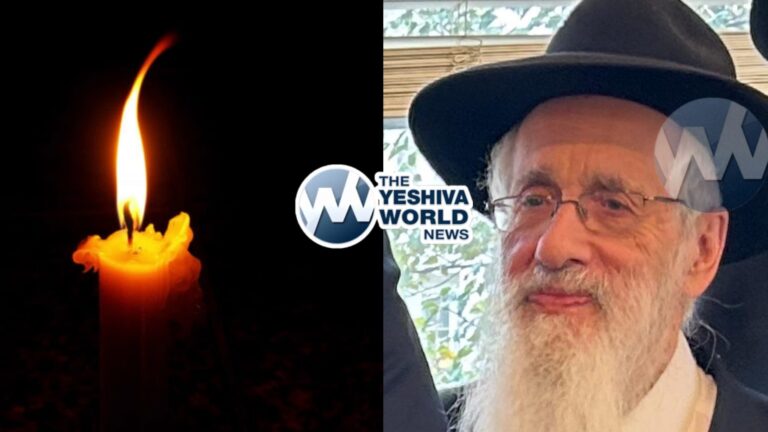 [By Rabbi Yair Hoffman for the Five Towns Jewish Times]
[By Rabbi Yair Hoffman for the Five Towns Jewish Times]
The city of Golden, Colorado is a friendly place. For example, it is the home of both the Coors beer plant as well as the prestigious, “Colorado School of Mines.” Each St. Patrick’s Day, Coors pipes in green colored beer to the college students at no charge. That’s friendly.
It is also the birthplace of the product known as “Jolly Rancher” candies, named to connote the friendly nature of the people of Golden, Colorado. The product has since passed through several hands and is now owned by the Hershey Company. The candies are no longer produced in or near Golden, Colorado, and the kosher-labelling aspect of these candies is now no longer so friendly.
Indeed, the kosher-labelling aspect of the 9.1 ounce package of Snack Size Jolly Rancher Bites and Twizzlers Bites is causing enormous controversy in Brooklyn and in other Jewish neighborhoods.
How so?
Well, it has caused great confusion among consumers. The 9.1 ounce package actually contains three varieties of candies: One non-kosher Jolly Rancher Bites Filled Gummies—Watermelon, Green Apple and Cherry (.7 ounce size) together with two “OU”-certified varieties, Twizzlers Bites Mixed Berry and Jolly Rancher Bites Soft Chews.
That first variety, “Filled Gummies” contain non-kosher gelatin.
There is no false labeling happening here. The outer packaging bears a warning label that states, “Package contains kosher and non-kosher items.” The controversy lay in the fact that, after all is said and done, thousands of kosher consumers erroneously purchase the product and feed tarfus to their children.
Why do some consumers erroneously purchase the 9.1 ounce package?
It is because the outer packaging bears two small tiny “OU” symbols directly after the ingredients are listed. The non-kosher Jolly Rancher Bites do not bear that tiny “OU.” People are trained to just quickly look for any OU, and then they deem the entirety of the product kosher.
The OU has thus far allowed this type of packaging because (1) – the OU symbols that appear on the outer package clearly show that they appear only for the specific sub-item in the package. They are listed only after the ingredients and (2), there is a clear disclaimer on the outer package that there are non-kosher items in that package.
 THE OU’S RESPONSE
THE OU’S RESPONSE
This author has reached out to Rabbi Menachem Genack, the head of the Orthodox Union who responded that he is reviewing the policy with the hope of changing it. He also explained, “I understand that it can be confusing and therefore we should move in a direction to eliminate this kind of situation.”
IS THIS LIFNEI IVER?
It is this author’s view that there is no prohibition of Lifnei Iver (placing a stumbling block before the blind) here, but that, in general, if a Kashrus agency places a kashrus symbol on an item that is non-kosher – it can be a violation of Lifnei Iver.
THE CONTRADICTION IN LIFNEI IVER AND THE THREE RESOLUTIONS
In order to understand why some cases are or are not actual Lifnei Iver, we must first understand an apparent contradiction in the Talmudic sources that concern this prohibition, and the three methods in the Poskim that are used to resolve the contradiction. The contradiction is between the Gemorah in Nedarim (62b) versus the Gemorah in Bava Metziah (5b)
THE FIRST SOURCE
The Talmud (Nedarim 62b) tells us that Rav Ashi had an Avah, a forest, and he sold it to a fire-temple. When he was asked about the prohibition of Lifnei Iver he responded that most of the wood would be used for ordinary heating and not idol-worship. The Ran explains that whenever it is possible to assume a permitted purpose, (Teliya), we do so. This is the authoritative Halachic view.
[The TaZ rules like this Ran in beginning of YD 151, as does Rav Ovadiah Yoseph in Yechave Daas Vol. I §10. It is interesting to note that Rav Yitzchok Elchonon Spector (Ain Yitzchok OC #13) writes that since it was almost definite that the fire-temple would use the wood for idol-worship Rav Ashi required a majority of most wood being used for heating in order to permit it.]
We also find a similar Mishna in Shviis where there is a debate between the Bais Shammai and Bais Hillel regarding the permissibility of selling a cow for plowing immediately before the onset of the Sabbatical year to someone of whom it is suspected will plow with the cow during the Sabbatical year. Bais Shammai forbids the sale, while Bais Hillel permits it based upon the fact that the purchaser might use the cow for slaughtering purposes.
The implication of the Nedarim Gemorah is that Lifnei Iver is, in a certain perspective, more lenient than other Biblical prohibitions since, generally speaking, if there exists any doubt in it, there is no violation. This is how it is viewed in the Responsa Chsam Sopher YD #9 and in the Liflagos Reuvain as cited by Rav Waldenberg zt”l in his Tzitz Eliezer Vol.IV 5:3.
THE SECOND SOURCE
On the other hand, there is an enlightening passage in the Talmud (Bava Metziah 5b) concerning shepherds. It seems that shepherds have a tendency to allow their own flock to pasture on land that is not their own.
This is true regarding one’s own flock, but not regarding shepherds that watch someone else’s flock.
There is a Talmudic principle that a person will only sin for his own possessions, but he will not sin for another. Were it not for this principle it would have been forbidden to give one’s sheep to a shepherd because of his propensity to steal. Clearly, whenever there exists a very strong likelihood that a law will be violated, the issue of Lifnei Iver exists as well.
The Talmud further states (Bava Metziah 75b):
Rabbi Yehudah said in the name of Rav:
Whoever has money and loans it without witnesses is in violation of Lifnei Iver.
The Shulchan Aruch (CM 70:1) codifies this as Lifnei Iver.
This Gemorah shows that whenever there is a strong likelihood of a violation – there is a prohibition of Lifnei Iver. This lies in apparent contradiction to the notion of assuming a permitted purpose that was implied in the first Gemorah!
RESOLVING THE CONTRADICTION
There are three different methods cited in the Poskim in which this contradiction can be resolved. This is an important issue as there are many Halachic differences depending upon which approach is taken. It may also delineate when and whether a hechsher is a violation of Lifnei Iver.
FIRST APPROACH
Some authorities understand the distinction as follows: If the action that is being performed will directly lead to a violation on the part of the recipient, and without him the recipient would not have had the desire to violate the Halacha, then it is a violation of Lifnei Iver.
This was the approach to resolve the contradiction that was given to me by Rav Dovid Feinstein Shlita, slightly before I published my Sefer on Lifnei Iver. It is also the second approach of the Tzitz Eliezer Volume IV Section5:3.
This may be alternately expressed as follows: In a case of non-certain violation there is a prohibition of Lifnei Iver only when the person created the opportunity for the sin. If he did not create the opportunity, then it is permitted.
SECOND APPROACH
Others approach this contradiction by understanding the prohibition of loaning money without witnesses as only a Rabbinically prohibited form of Lifnei Iver. The wording of the Talmud, however, does not strongly support this approach. This is the first approach of the Tzitz Eliezer in Volume IV section 5:3.
THIRD APPROACH
The third approach is that whenever there is a greater probability of a violation than a non- violation then we do not assume a permitted purpose. The earlier cases cited were only permitted because each of them had a greater probability of a permitted purpose than a prohibited purpose.
According to this third approach, whenever the possibility of violation is greater than non-violation, we must assume that there is a biblical prohibition of Lifnei Iver. If we are unable to determine whether the possibility of violation is greater, then we must be stringent.
The proponent of this third approach is the HaGaos Tosfos Anshei Shaim (Mishnayos Shviis 5:7).
This approach disagrees with the aforementioned TaZ in the beginning of YD 151. The case of Rav Ashi would have to be understood as Rabbi Yitzchok Elchonon Spector writes (Ain Yitzchok OC 13) that Rav Ashi required a majority of most wood being used for heating in order to permit it. In other words, one would have to examine each piece of wood individually rather than looking at the forest as a whole.
CONCLUSIONS
The three different methods of resolving the contradiction are crucial in determining whether it is permitted to make an assumption of a permitted use when embarking upon any item that could be Lifnei Iver. In this case, the permitted use would mean that the consumer will give the non-kosher candy away to a gentile. This assumption of a permitted use is called in Hebrew “Tlia.”
Many authorities have written that one is only permitted to make use of the assumption of Tlia when it is absolutely necessary. For example, if one needs to make the assumption in order to provide himself with his livelihood.
One is permitted to sell an item that has both permitted and non-permitted uses. One may assume a permitted use even when it is a case of Trei Ivra DeNahara. One may assume a permitted use even when the prohibition involved is biblical.
It is this author’s view that although allowing this type of placement of the OU on the package is not Lifnei Iver – it is certainly not a good idea because, at the end of the day, people are purchasing it.
It seems, however, that the OU is determined to change the policy that had allowed it until now. In addition to this consumer alert, the author would like to thank the wonderful people at the Orthodox Union whose hard work and dedication to Kashrus allows us to enjoy hundreds of thousands of the most remarkable products. It is hoped that the efforts of the OU in this area as well as their remarkable role in Kashrus halacha will be appreciated by the kashrus observing public.
The author can be reached at [email protected]











2 Responses
http://www.theyeshivaworld.com/coffeeroom/topic/ou-kashrus-is-not-reliable/page/2?replies=84#post-602354
Rabbi Hoffman,
I dont know what line of work you are in but in the REAL world, things dont happen as fast as you want it to. Obama has his pen and you have your computer. Congratulations.
I have also spoken to people in kashrus and they all said this is not a re-callable issue, however as Rabbi Genack noted, this is something to be looked into and policy should be enacted because of this. The company is NOT doing anything wrong because they are showing that those two items are kosher, they copied their Nutritional Declaration from the other packaging.
Kashrus agencies cannot act as the brains of the consumers. We need to take some SELF responsibility too!